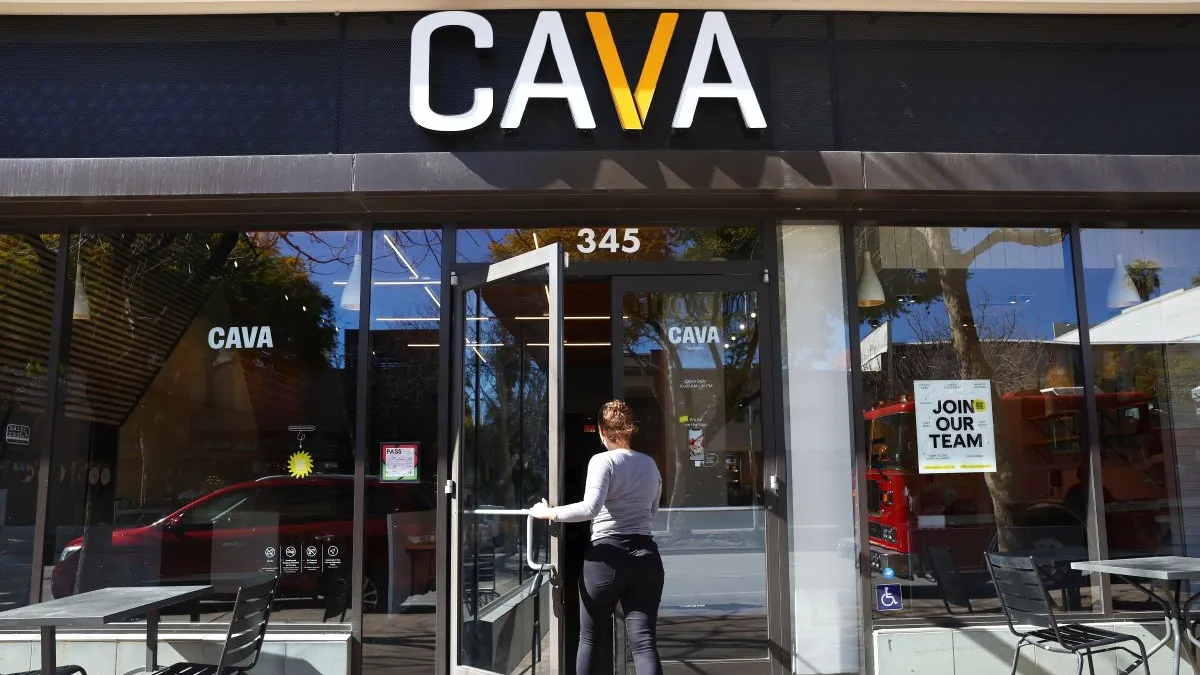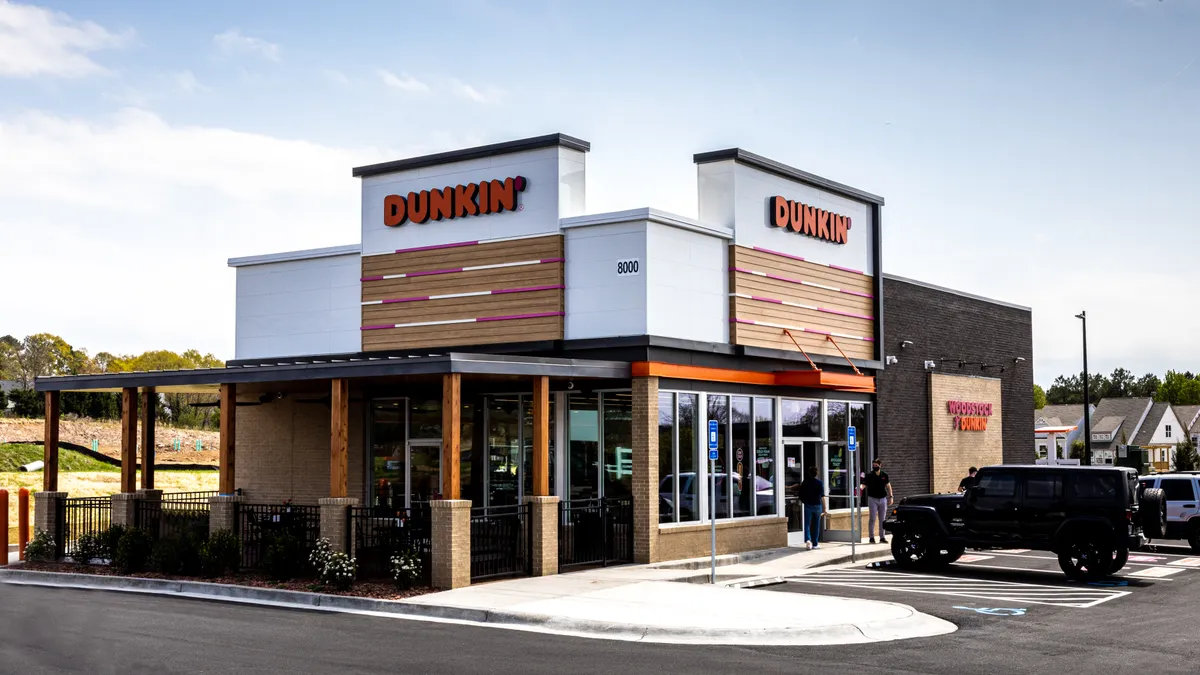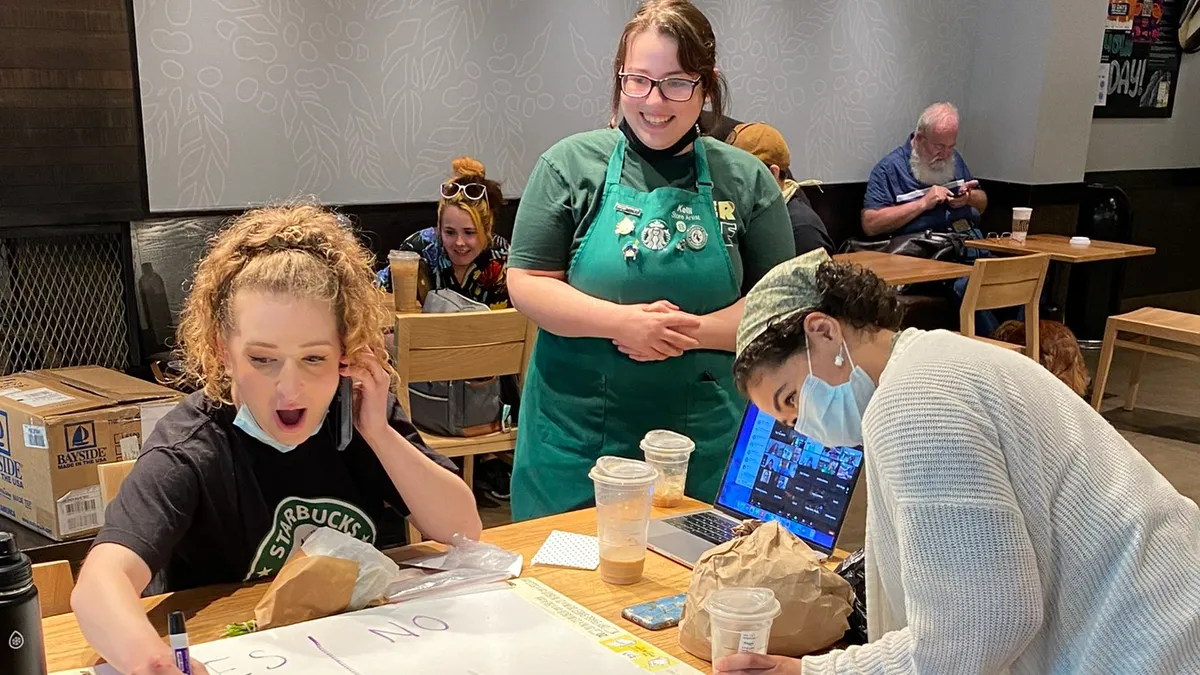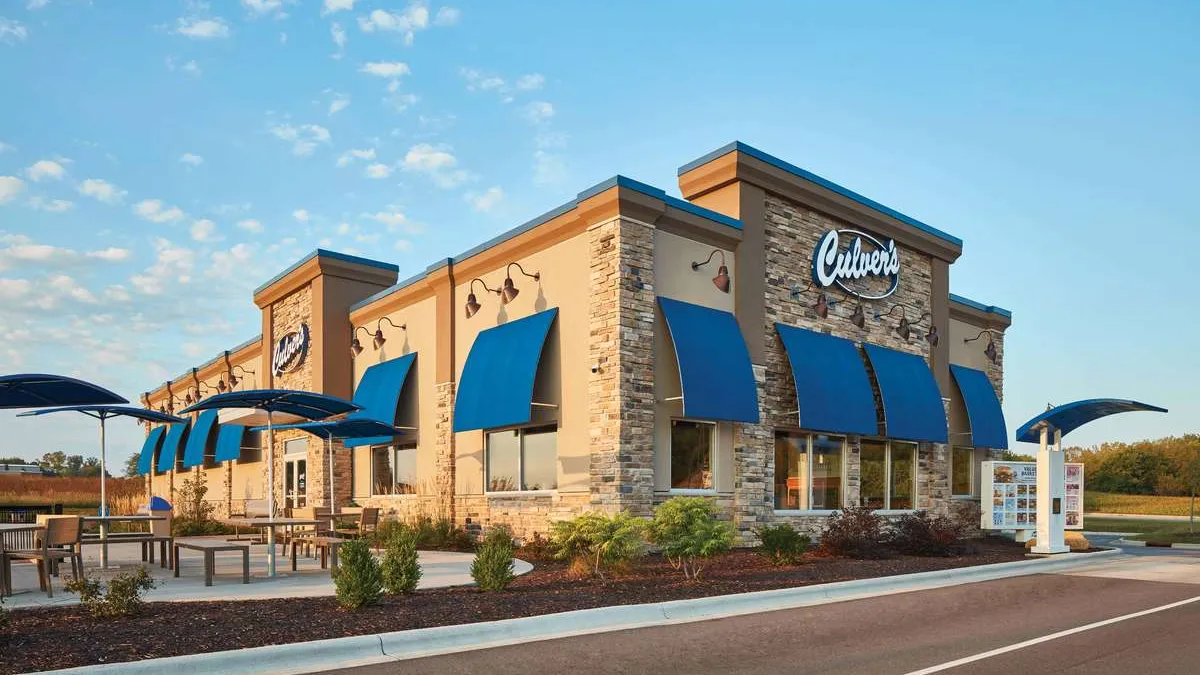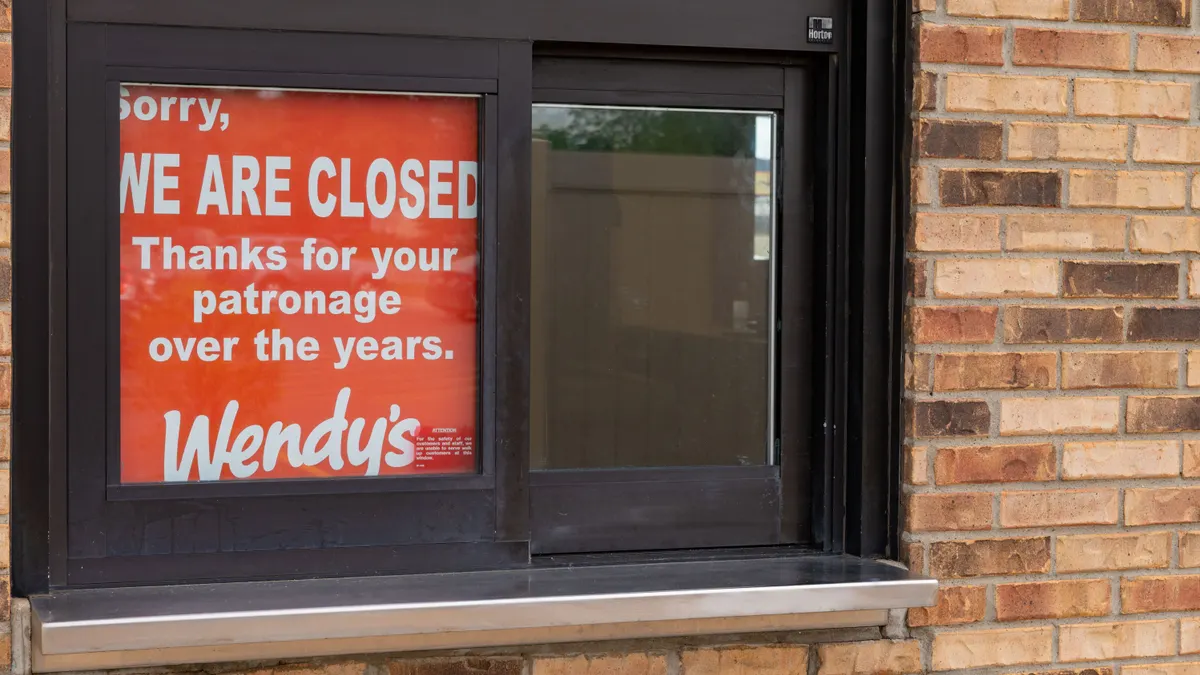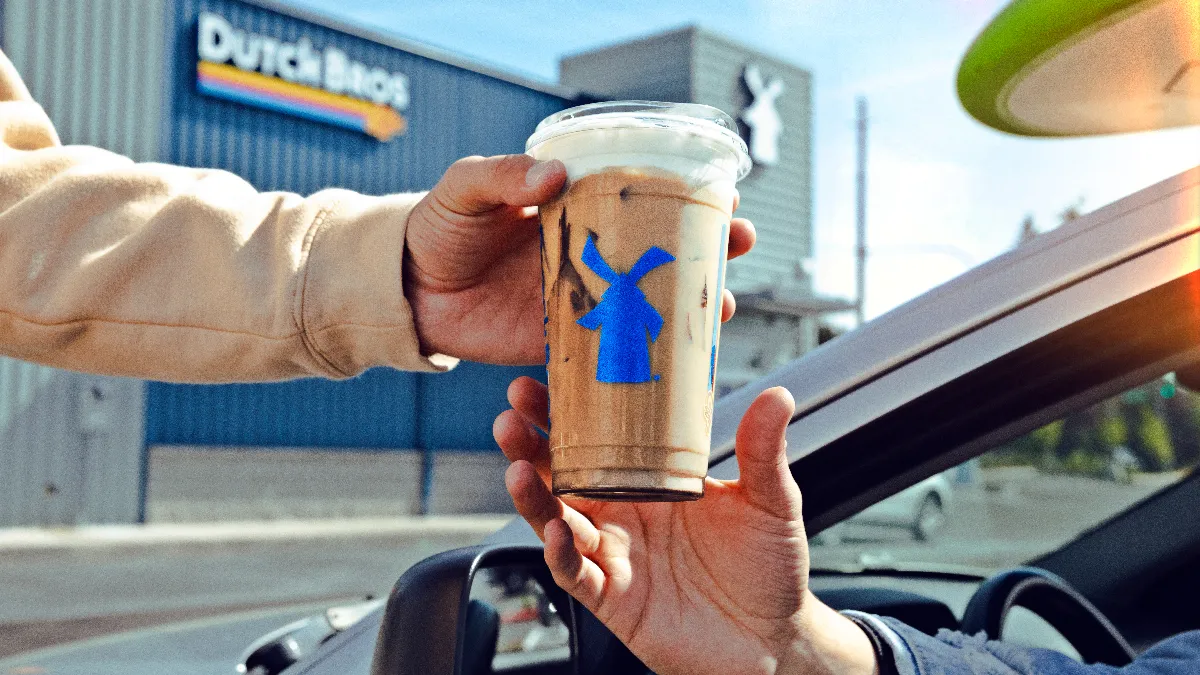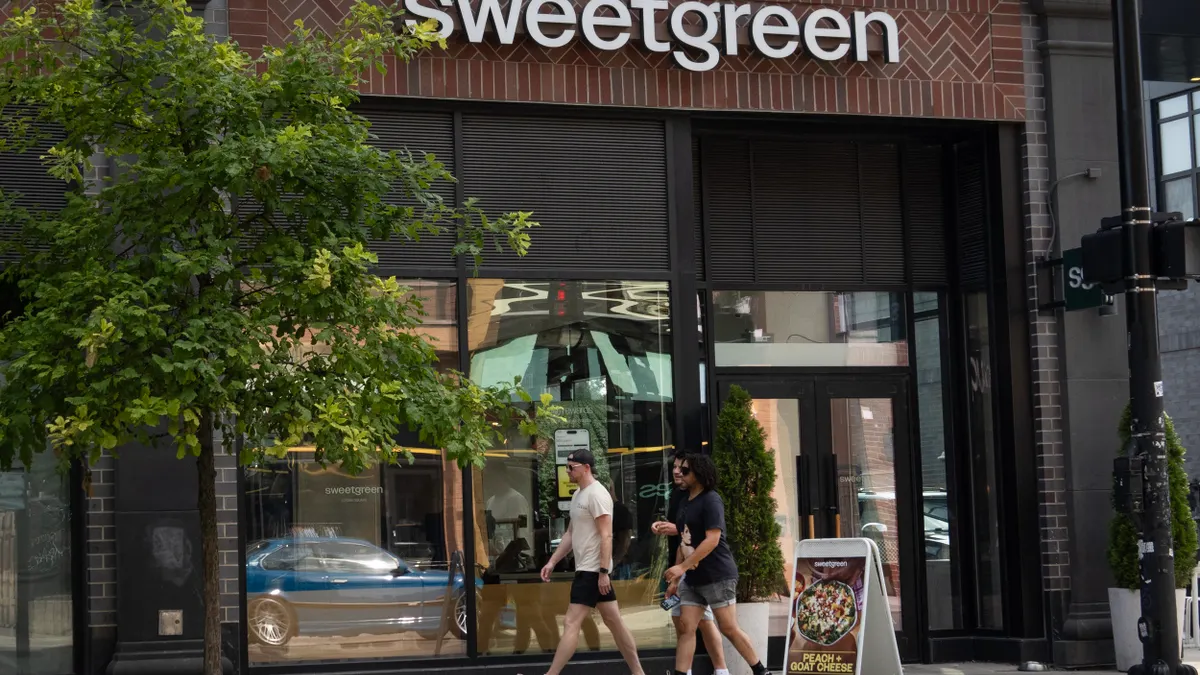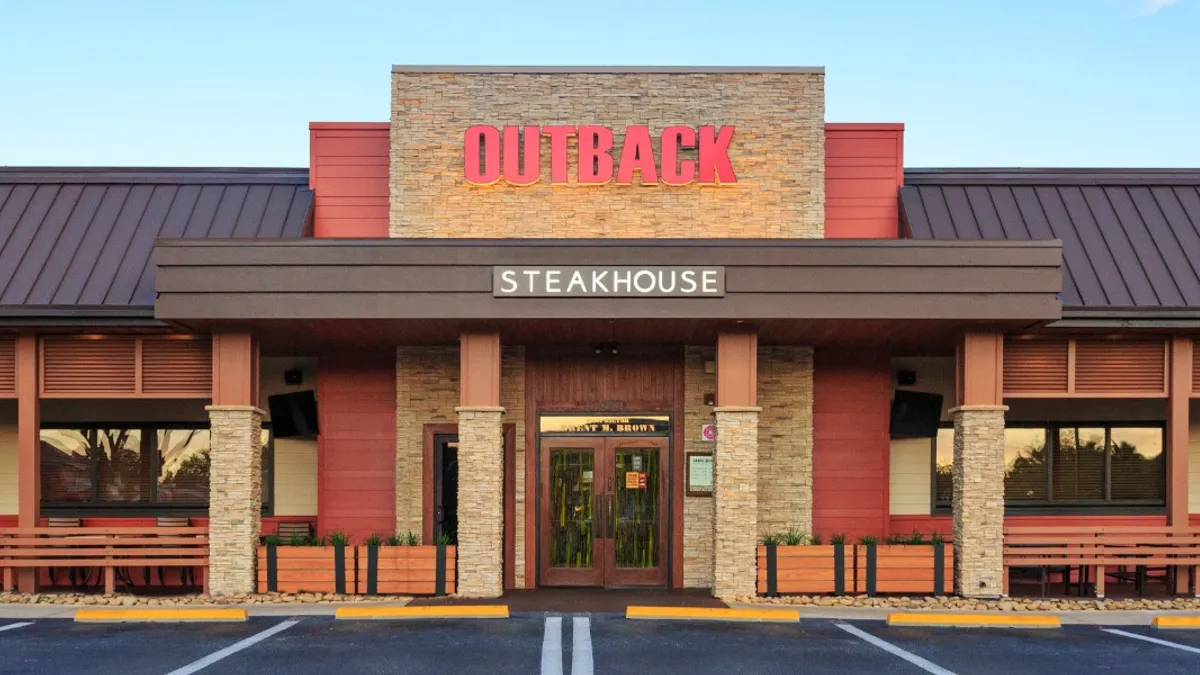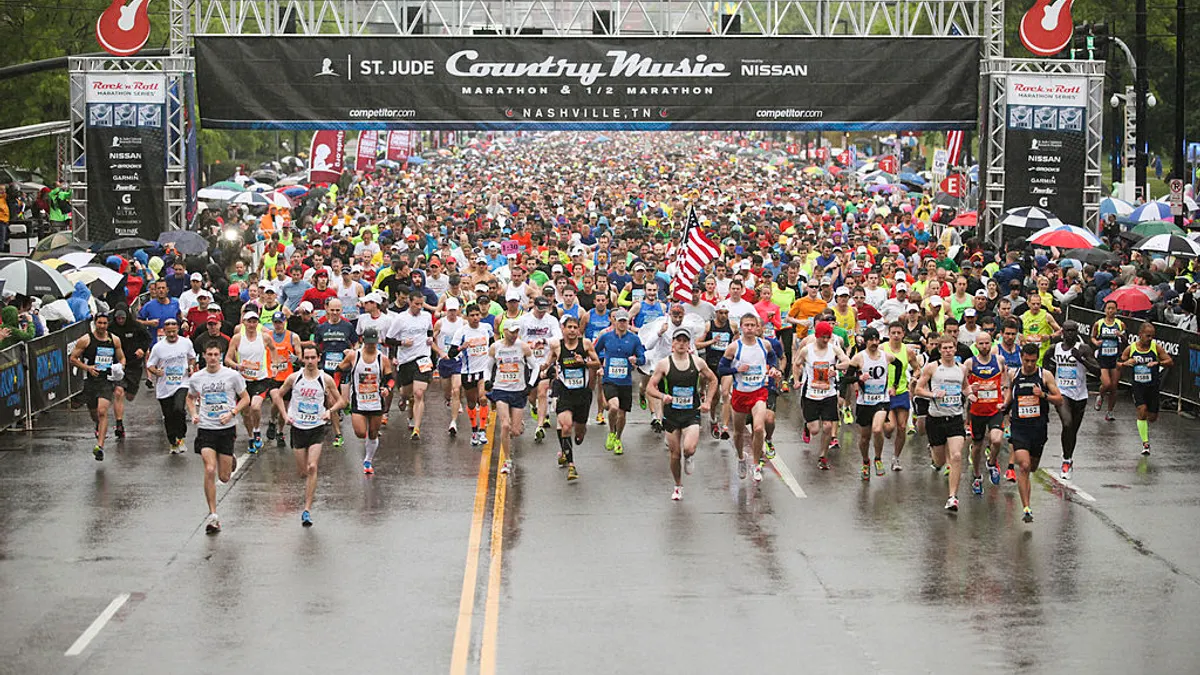Cava outperformed Chipotle, Wingstop, Sweetgreen, Potbelly and Shake Shack in same-store sales in Q1, posting 10.8% year-over-year growth, according to the chain’s earnings release.
More impressive, the bulk of the chain’s comps growth came from traffic, which rose 7.5% in the quarter.
CFO Tricia Tolivar, in an interview with Restaurant Dive, attributed the brand’s strong performance to the appeal of its Mediterranean cuisine in combination with its long-term strategy of keeping price hikes below the inflation rate.
Cava is also bucking a lot of macro headwinds.
The chain’s quarter ended April 20, so its results include several weeks following President Donald Trump’s imposition of tariffs on most U.S. trading partners — as well as much of the subsequent trade policy uncertainty.
Inflation expectations have been increasing since December 2024, according to the Federal Reserve Bank of Atlanta, substantially driven by the implementation of tariffs on many key goods. Cava does not anticipate major pricing changes due to inflation this year, however. Tolivar said the tariffs haven’t significantly altered Cava’s cost-of-goods-sold.
“Our basket of ingredients is largely domestic[ly] sourced, and is also very diverse. So it's 25% protein, 25% produce, 25% grocery, and 25% everything else,” Tolivar said.
Cava also hasn’t seen a change in diner trends post-tariffs, either.
“There hasn't been any shift in our consumer behavior,” Tolivar said. “So we know there are stronger headwinds, and consumers are feeling more challenged, but our premium attachment continues to be high.”
Tolivar said traffic grew across geographies, dayparts, store formats and income cohorts and was particularly strong among low-income consumers, who have pulled back from spending at many chains, including at McDonald’s.
How major fast casuals performed in Q1 2025
“We aren't seeing any pockets of weakness really,” Tolivar said.
Sharon Zackfia, a William Blair analyst, said in a research note emailed to Restaurant Dive that Cava posted outsized gains with low-income consumers, highlighting its value proposition.
CEO Brett Schulman, speaking on the brand’s earnings call, said that Cava’s average unit volume is over $2.6 million in every region. Its national AUV is $2.9 million, according to its earnings release.
Traffic growth indicated a strong competitive position for Cava, Schulman said.
“We have to prove every day why we are better than the three or four restaurants next to us. And we've been able to do that in recent quarters,” Schulman said.
Cava speeds up development as brand awareness grows
The chain’s first quarter was successful enough that it increased its projected new openings for the year from between 62 and 66 to between 64 and 68, a modest increase, Tolivar said.
The bulk of the chain’s development is concentrated in markets where it already has a presence, but Tolivar said Cava’s development in new markets will increase somewhat later in the year.
Cava recently entered the Indianapolis and South Florida markets and plans to open its first Detroit and Pittsburgh stores later in 2025, building on the success of its Midwestern debut in Chicago last year. Overall, the new restaurants are doing well regardless of market, Tolivar said.
“The entire cohort of restaurants in 2025 is outpacing our expectations,” Tolivar said.
One source of success for new openings is growing national brand awareness, Zackfia said.
“Cava is now entering new markets with brand awareness of 20% to 30% or better, versus levels at the IPO that were more typically 10% to 20%,” Zackfia wrote.
One driver of that, Zackfia noted, is the brand’s efforts to add new menu items, like hot harissa pita chips, a steak and harissa bowl, and a spicy lamb and avocado bowl, which create social media buzz.
Increased national expansion could insulate Cava from a downturn in its home market, while also improving consumers’ overall awareness of the brand. Zackfia said the brand’s geographical concentration in Washington, D.C., and neighboring states, was a potential risk — federal jobs cuts and contract cancellations under the Trump Administration have disproportionately impacted the region’s consumers.
In-store changes
Cava also began working last year on improving its dining rooms to boost customer engagement. Cava’s Project Soul is intended to warm up the interior of its restaurants. Other brands, most notably Starbucks, have also started moving toward a warmer on-premise experience. But the chain’s coffeehouse makeover has yet to turn into durable same-store sales growth.
Tolivar said the proportion of new restaurants incorporating Project Soul elements — curves in place of harsh lines, greenery, seating cushions, warmer colors, more natural materials — will increase. By 2026, all of its new builds will incorporate Project Soul’s design tenets, Tolivar said.
“We can be a warm place in this cold environment that we've got right now,” Tolivar said, noting that on-premise experience is a contributor to the brand’s value proposition.
Schulman said these changes were key to the brand’s identity.
“Now more than ever, people are seeking human connection, and we aim to meet that need by delivering warmth and hospitality,” Schulman said.



